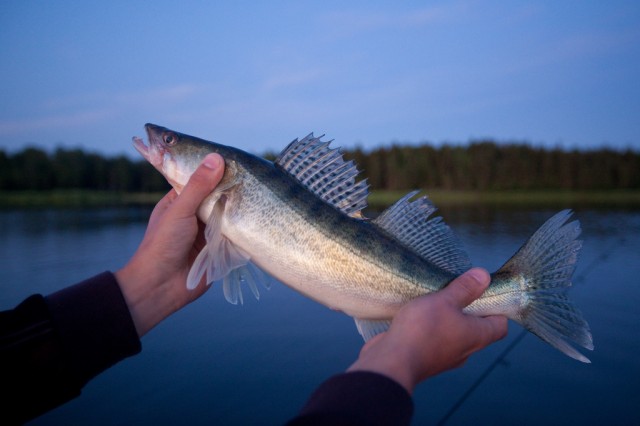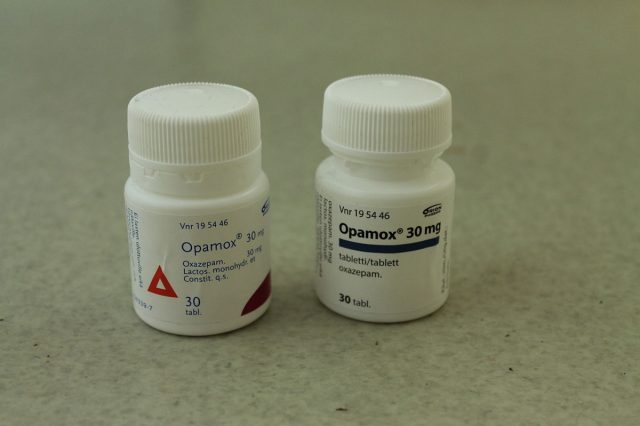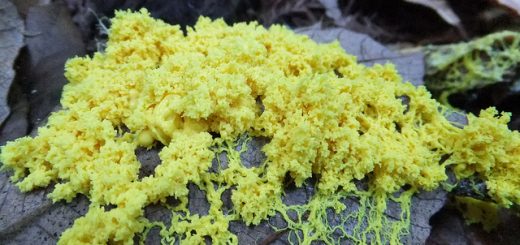Therapeutic pollution: a different kettle of fish

When chemicals spill out into the world around us, we need to know what consequences they will have. In general, an opinion of “what doesn’t harm is fine” holds – both for ecotoxicological tests, used to determine the adverse effects of contaminants, and in the community overall. Indeed, it is quite intuitive. But what if pollution can have a positive, therapeutic effect? A team of researchers from Sweden are challenging the field, demanding a radical change of how we perceive pollution and, specifically, how we test for it 1.
Blind on one eye
The Swedish researchers, led by Jonatan Klaminder of Umeå University, had a hunch that the ecotoxicological tests were missing something: therapeutic effects of pollution. Usually, when ecotoxicological tests are carried out (as by OECD standards), they test for increased mortality, which essentially means whether or not exposed animals die more than unexposed ones. This is done in best scientific fashion by comparing a group of animals exposed to the contaminant with a control group. In order to tell whether the ‘drugged’ animals die more, the control group is kept at zero mortality.
However, what that means is that only increases in mortality show up on the test, as you can’t measure a decrease in mortality against a group which has, as a requirement, no mortality. But in reality, animals do have a mortality rate – so how do you know if exposed animals die less than the unexposed ones?
Fishing for answers
Klaminder and his team decided to investigate the issue by looking at the specific case of Swedish perch living in lakes known to have the anti-anxiety and anti-insomnia drug Oxazepam swimming around in its surface waters. Oxazepam is quite a common pollutant of surface waters and would, therefore, potentially affect a range of wildlife in its proximity.

Swedish Perch. Image Credit: Fredrik Lindström via Flickr ( License )
In humans, Oxazepam is used to treat anxiety because it enhances the binding of GABA, a neurotransmitter in the central nervous system, to the GABA-A receptor. In the adult brain, GABA is an inhibitory neurotransmitter. When a neurotransmitter binds to a receptor it can broadly be divided into the categories of ‘excitatory’ or ‘inhibitory’. If it’s excitatory, it will cause the target neuron, whose receptor it has just bound to, to “fire” and continue the chemical signal. If it’s inhibitory, as is the case of GABA, it will inhibit further neuronal firing. What happens is that when GABA binds to a GABA-A receptor, at which point it is ‘activated’, it opens a chloride ion channel. Chloride ions are negatively charged chloride atoms. That means that the more chloride ions you have, the greater your negative charge will be. In the adult brain, then, the chloride ions flow into the neuron, increasing the negative charge and resulting in an inhibitory effect 2. The use of an inhibitory neurotransmitter makes sense for an anti-anxiety drug because it calms down an overstimulated, “excited” brain.
As GABA-A receptors are, evolutionarily speaking, very old and found in all vertebrates, including perch, the Swedish researchers made the well-informed guess that oxazepam could potentially be influencing perch life. They decided to look both at adult fish and fish fry (tiny baby fish, recently hatched from roe.) For the adult fish, the team used 2-year-old wild fish from an isolated lake with no Oxazepam pollution, and split them into three groups: a low-dosage group, a high-dosage group and control group. Before the fish in the experimental conditions were exposed to Oxazepam, all fish were evaluated for behaviour on three parameters: activity, boldness and sociability. Believe it or not, there are standardised tests for fish behaviour (why wouldn’t there be?). After a seven-day period of exposure, the remaining fish were tested again. This allowed the researchers to compare behaviour both across groups and within the group, before and after exposure. The number of dead fish was also compared across groups.

Oxazepam, a common surface water contaminant. Image Credit: ZngZng via Wikimedia Commons ( License )
Roe were collected from a different population, and were split into groups which were exposed to different levels of Oxazepam at different points during their development. They were then hatched to fry and their activity was similarly evaluated (boldness and sociability tests are used mainly for mature individuals.)
Just keep swimmin’
Their results showed that Oxazepam did indeed decrease mortality rates, both for fish and fry. Part of the reason might be found in the behavioural changes induced by the drug: the mature perch in the exposed conditions were more active and they were bolder. They became better foragers. However, they also became less sociable. The fry’s activity was dependent mainly on when the exposure to Oxazepam happened, rather than the dose of the drug. Intuitively these patterns seem strange, considering the fact that Oxazepam should’ve calmed down the animals. Nevertheless, one wouldn’t necessarily expect fish and humans to respond in entirely similar ways to the same drug, even if its neuronal mechanism is similar. Also, although it appears that the drug gave the fish some extra umph, this might have been a result of a more stress-free and less anxious existence.
And here lies the conundrum: is therapeutic pollution a good thing? For the fish in the study, it was found that they ate more and died less. However, several things stand out as possible curses in disguise. How does decreased sociability influence fish mating behaviour? Would increased boldness lead to dangerously increased carelessness in predator-rich environments? What about other side effects that don’t fit into the three behavioural parameters tested for? Pharmaceuticals sometimes have unpleasant side effects for people; it’s not unreasonable to think that it might be case for fish, too.
Finally, assuming that therapeutic pollution doesn’t have any scary hidden consequences for the fish themselves, how can we know whether a sudden increase in perch numbers would have a good effect on their surrounding ecosystem? Large ecosystem changes are often a result of a newly introduced animal with no natural predators exterminating native species, or the removal of a major predator allowing its previous prey to prosper and ‘overeat’ the resources. Whether such massive effects can be expected or not, it is clearly not an uncomplicated question.
Ecotoxicology 2.0
Despite several uncertainties in the Swedish study – for example, fish in experimental conditions face different stressors than in the wild – they have a point. Chemical pollution, perhaps especially from pharmaceuticals, cannot be solely evaluated based on how much they increase mortality. Whilst one could be forgiven for arguing that we just shouldn’t have any pollution, from pharmaceuticals or anything else, that’s easier said than done. A US Geological Survey from 2002 measured 139 US streams considered to be pollution-susceptible and found chemicals in 80% of them 3, including prescription and nonprescription drugs, hormones, insect repellent, etc. That’s extensive.
It’s especially difficult because pollution isn’t merely a result of careless, ethically sketchy chemical industry. Whilst it is true that lots can be done to minimise waste and optimise security of manufacturing of chemicals, contamination of our waters also happens through the consumption of chemicals. Private households, hospitals, agriculture and other industry similarly contribute to the pollution through consumption and waste. Clearly, it quickly becomes a job much larger than initially anticipated.
Regardless of how we decide to tackle pollution, it’s important to know what we’re dealing with – and this is the role of ecotoxicology. It is, therefore, essential that the field stays rigorous, stays updated, stays clear-headed. Science repairs itself and only keeps boundaries until they are overcome. There is a clear need for a new standard for tests so that we can help our elected representatives make informed decisions without any blind spots.
This article was specialist edited by Felix Bloeck and copy edited by Charlie Stamenova and Matthew Bluteau.
References
- ‘The conceptual imperfection of aquatic risk assessment tests: highlighting the need for tests designed to detect therapeutic effects of pharmaceutical contaminants’. J Klaminder, M Jonsson, J Fick, A Sundelin and T Brodin. 2014.
- ‘The role and the mechanism of γ-aminobutyric acid during central nervous system development.’ K Li & E Xu. 2008. Otherwise the wikipedia articles on Oxazepam and GABA are quite good.
- An easy-to-read pdf from the US Geological Survey from 2002










